Turn of the Century
Concepts. This design was developed using Principles in Surgery and Science/Engeering to make wider, self-sealing corneal incisions - a CURVED blade for a curved comea, and MULTIPLE (connected) TIPS for multiple (connected) flaps that seal the incision. On a smaller scale, like for cataract surgery, this design would logically seal better than typical blades that are flat and single-pointed. This design also optimized BOTH instrument and procedure to minimize the induced astigmatism.
May 2002
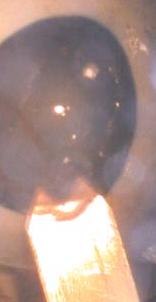 Concept
validated with 1/4-inch
(6.35mm) prototype keratome (machined from brass) on a pig’s
eye, White PIains, NY.
Concept
validated with 1/4-inch
(6.35mm) prototype keratome (machined from brass) on a pig’s
eye, White PIains, NY.
Dr. Herbert L. Gould, and Dr. Tom M. Schossau.
Oct 10, 2002
US Patent Application filed and is currently pending.
Nov 8, 2002
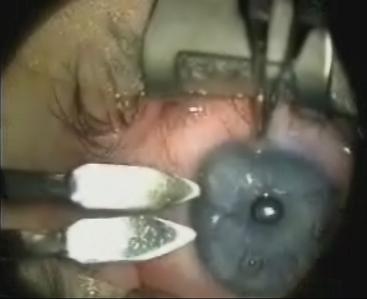 Prototype 7.0mm Keratome for phakic IOL*, Anguilla (Rotary
Club, Dr. Louis Y. Bardfield, OD). Dr. Herbert L. Gould, and
Dr. Tom M. Schossau. (*Caroline Davis)
Prototype 7.0mm Keratome for phakic IOL*, Anguilla (Rotary
Club, Dr. Louis Y. Bardfield, OD). Dr. Herbert L. Gould, and
Dr. Tom M. Schossau. (*Caroline Davis)
Spring 2003
 Testing and data analysis of prototypes* on cadaver eyes
performed by Resident Physicians, NY Medical College. (*BD)
Testing and data analysis of prototypes* on cadaver eyes
performed by Resident Physicians, NY Medical College. (*BD)
Apr 12-14, 2003
Presented at the American Society of Cataract and Refractive Surgery (ASCRS), San Francisco, CA.
Sep 6-10, 2003
Presented with engineering analysis at the European Society of Cataract and Refractive Surgeons (ESCRS), Munich, Germany.
Sep 8, 2006
Curved, Dual-Pointed 2.8mm Keratome*, lab-test on cadaver eye, Westchester Medical Center. Dr. Gerald W. Zaidman, Prof. & Chair, Dept. Ophthal., NY Medical College, & Dr. Tom M. Schossau. (*Firclay, www.firclay.com)
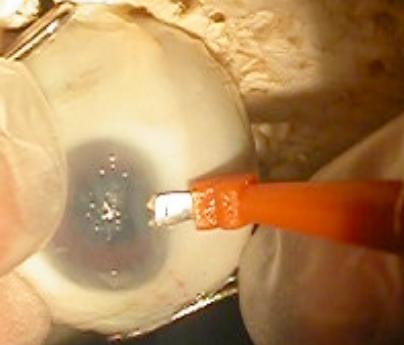
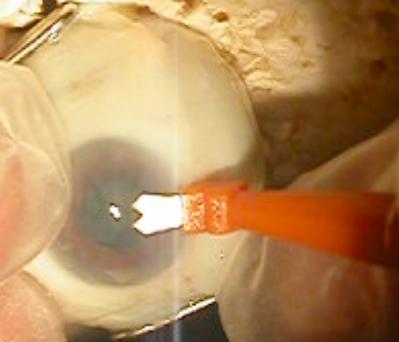
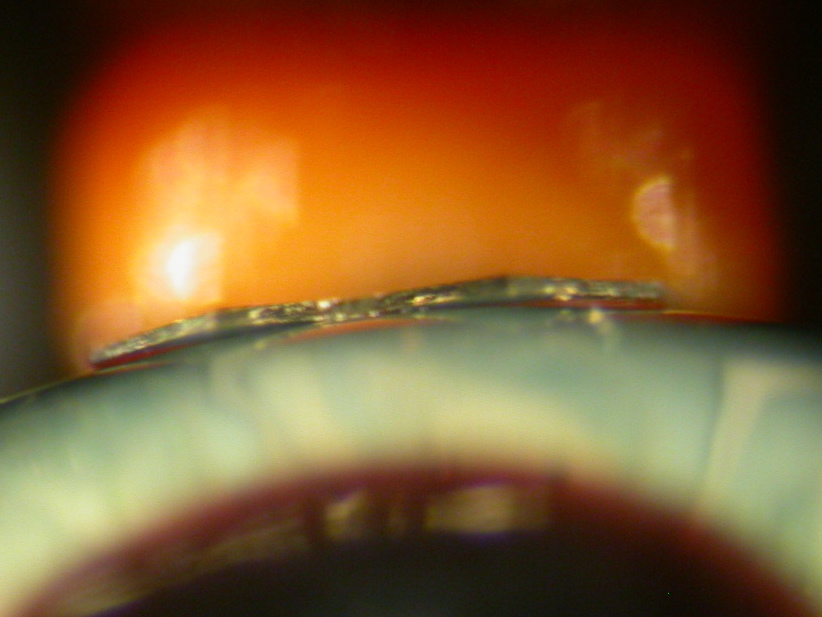
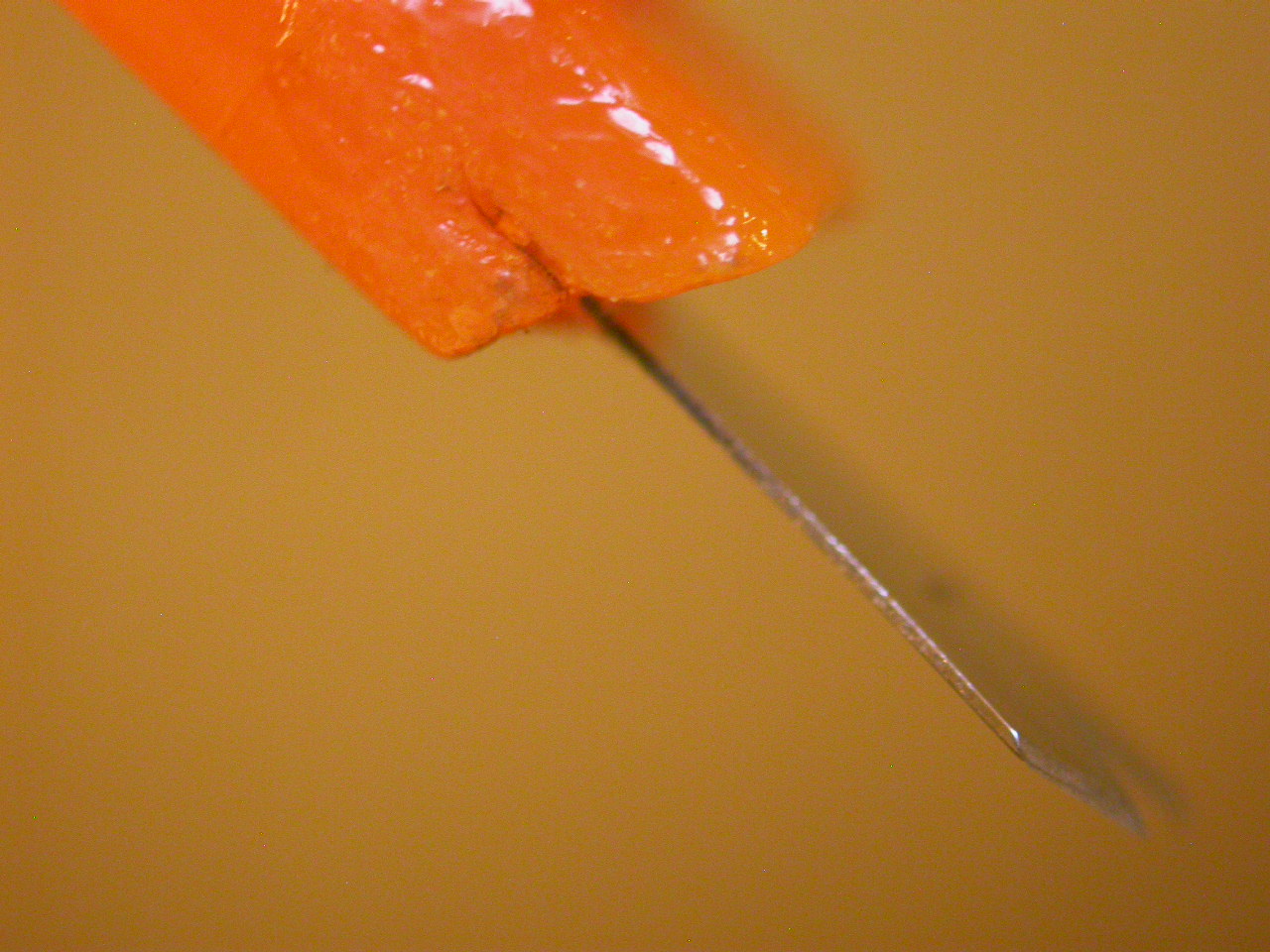
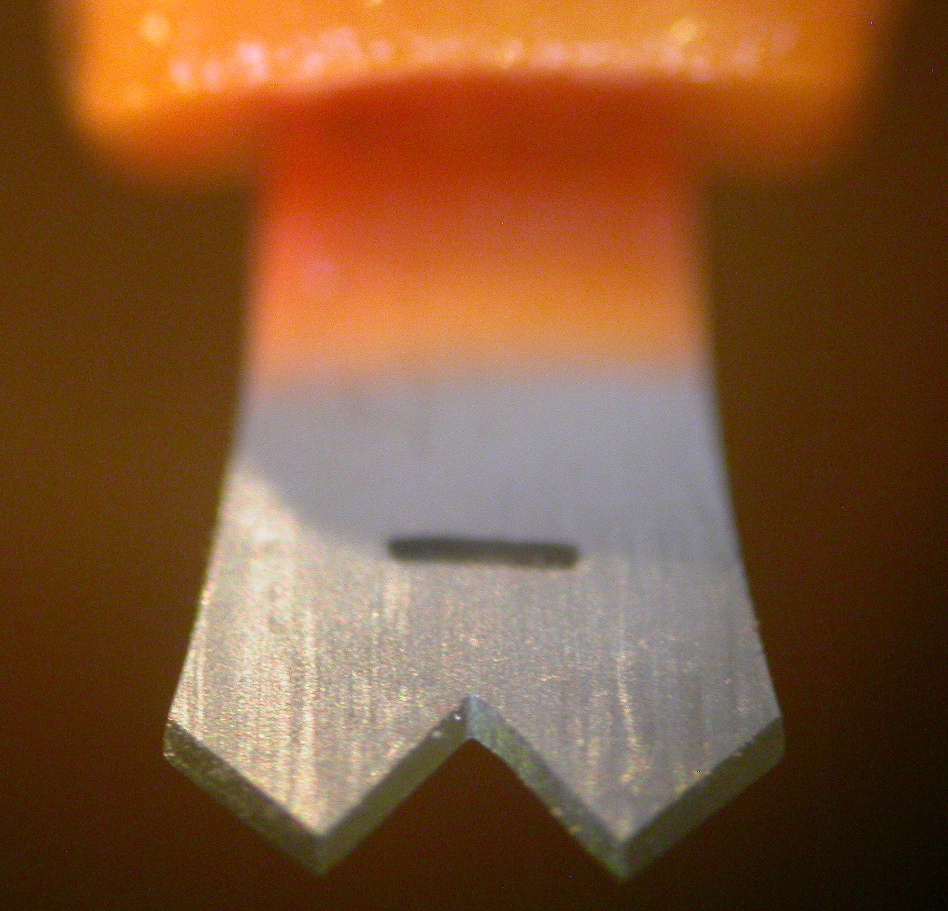
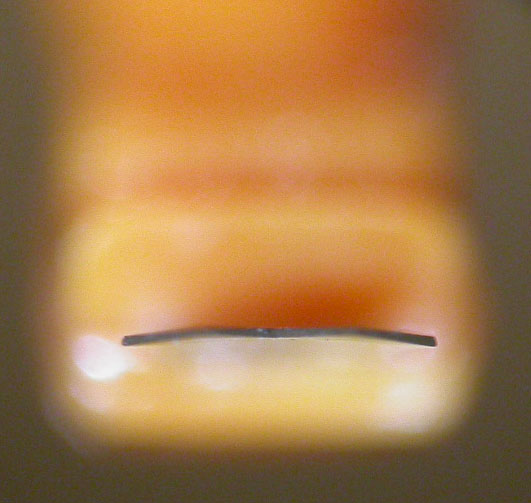
Aug 13, 2009
First used in surgery, Westchester Medical Center, Dr. Gerald W. Zaidman, Prof. & Chair, Dept. Ophthal., NY Medical College.
Apr 1, 2010
Surgical Trial, Wake Forest University Baptist Medical Center.
